Household humidifier subject to operating rules allows you to create an optimal microclimate in the living space. But with him, like with any other technique, problems can arise, including leaks and so on. Have you noticed a puddle next to a working device and do not know what to do if a humidifier is leaking and can you fix this problem yourself? Or is it better to contact a service center?
We will help you sort out these issues - our article discusses the possible causes of leaks and provides step-by-step instructions for identifying the location of the malfunction. We will also talk about what should be done to fix the breakdown, and in which case it will be more practical and cheaper to purchase a new humidifier.
The content of the article:
- Safety precautions when repairing a humidifier
-
Instructions on finding and eliminating leakage
- Step # 1 - verifying the build is correct
- Step # 2 - clarify the duration of the warranty
- Step # 3 - search for mechanical damage
- Step # 4 - checking electronics and mechanics
- Conclusions and useful video on the topic
Safety precautions when repairing a humidifier
A humidifier is an electrical appliance, and the interaction of electricity and moisture can lead to such negative consequences as shock or short circuit (short circuit) to users. A short circuit can not only completely disable the climatic device, but also cause a fire.
Therefore, when detecting traces of leakage, first of all, you need to take care of safety measures.
What should be done for:
- de-energize the device;
- pour out the rest of the water.
The last point must be performed so that liquid does not get onto the control board or any other electrical element of the structure during self-troubleshooting.
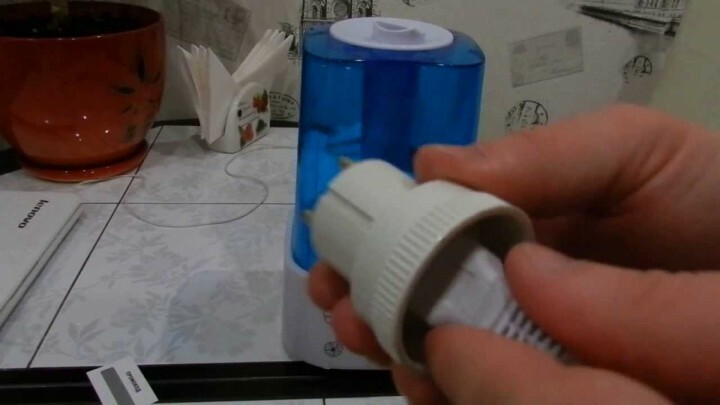
If signs of humidifier leakage are detected, then the first thing to do is to de-energize the appliance. This will provide the user with safety.
Instructions on finding and eliminating leakage
A problem such as water leakage from a humidifier can manifest itself for various reasons.
To identify a malfunction with a minimum investment of time and money, and eliminate it, you should perform a number of actions by checking:
- correct assembly of the unit;
- warranty validity;
- structural integrity;
- check the functionality of electronics and other structural elements that allow spraying.
Since each of these actions may affect the performance of a dripping humidifier, you should get to know them in more detail - this will facilitate effective troubleshooting and allow you to make the right decision.
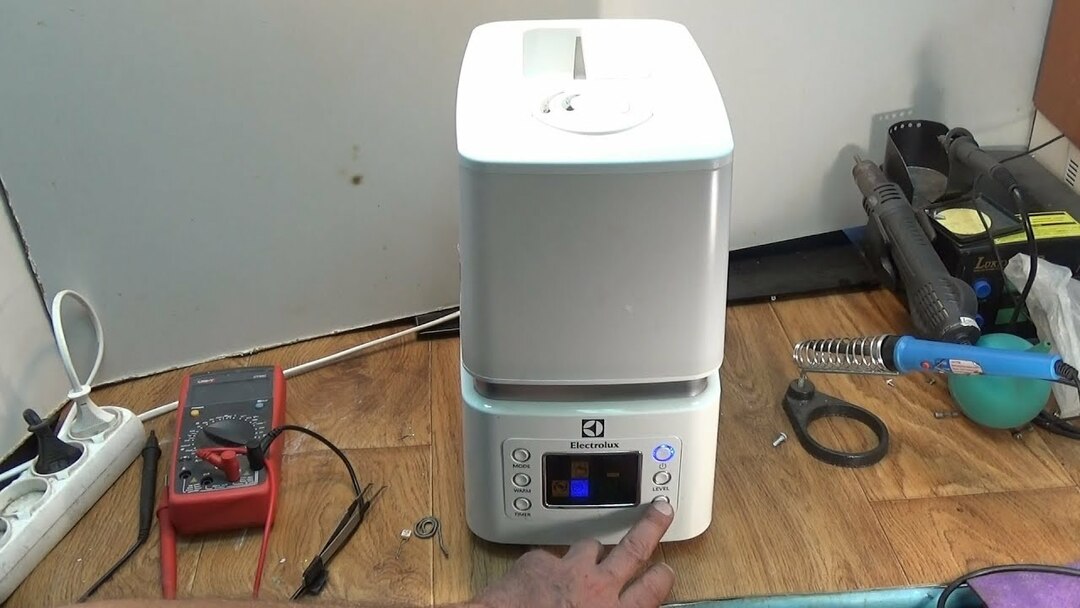
Identifying the causes of failure should begin with the simplest procedures and gradually move on to more complex ones. Since it is this method that will provide almond time consumption
Step # 1 - verifying the build is correct
There are rubber elements in the construction of any air humidifier. Namely gaskets housings, filters, valves. They are designed to exclude leakage, liquid transfusion.
But it happens that these parts are incorrectly installed, for example, after replacing a filter or disassembling the case for cleaning and maintenance. This leads to a violation of the tightness of the structure and loss of performance.
The described cause of leakage is common and easily remedied even at home. Therefore, repairs should always begin with a tightness test. Especially when the malfunction manifests itself after performing any manipulations with the humidifier.
Many models will leak if the filter is not tightly screwed on. If the humidifier has been in use for many years, leaks may indicate that the rubber components have reached the end of their service life and should be renewed. Which is technically simple and inexpensive, but it may be a problem to find the right gaskets.
However, in most cases, the problem will be resolved quickly, which simply requires the correct assembly of the humidifier.
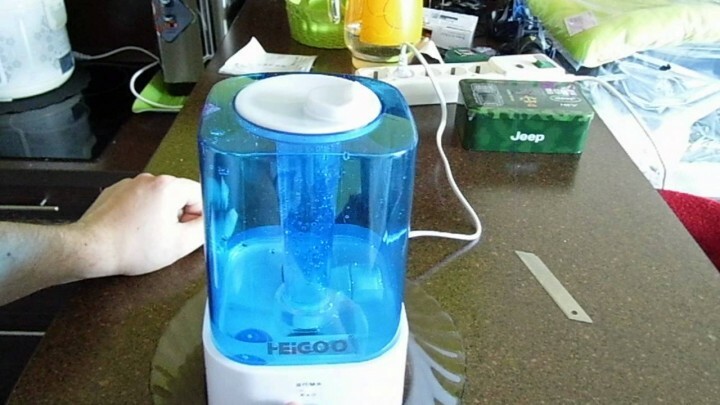
Routine visual inspection of the humidifier is an effective way to identify the cause of leakage. Which will help to identify the problem in case of improper assembly of the product, damage to the seals
Sometimes the installation of the unit on an uneven surface leads to distortions and deformations, which become the cause of leakage. All that is needed in this case is to use a horizontal and solid support.
We recommend that you familiarize yourself with the recommendations for choosing a suitable places for placing a humidifier.
Step # 2 - clarify the duration of the warranty
If, following the steps listed in the previous section of the article, you cannot achieve the desired result, then you should interrupt the search for the cause of the leak and remember when the purchase.
In case it was relatively recently, then you should find the documents that came with the humidifier and see if it is covered by the warranty.
If so, then there is no need to spend time on an independent troubleshooting and you just need to hand over the leaking unit:
- to a retail outletwho made the sale;
- to the manufacturer's service center, whose specialists will be able to perform high-quality repairs or return the funds spent on the purchase of a humidifier.
If there is still a possibility, then you should definitely take advantage of the guarantee provided by the manufacturer. Since this is the simplest and most effective way to avoid financial losses and time costs.
A significant disadvantage of contacting a service center is a long repair period - sometimes you have to wait for the required part for months.
Step # 3 - search for mechanical damage
Often the cause of the leakage of the air humidifier is cracks, chips and other damage that occurs on the case as a result of mechanical damage. Namely, during falls, impacts and any other critical loads.
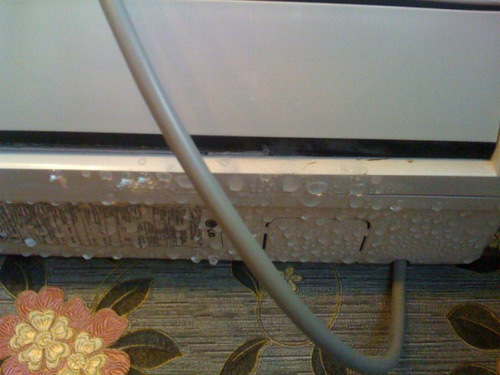
Humidifier housings are usually made from inexpensive plastics. Which can receive one or another damage under mechanical stress, for example, from a shock. And the older the product, the higher the probability.
In these cases, it is easy to identify the cause of the leakage of the humidifier. For this, it is usually sufficient to perform a visual inspection of the product body.
Leakage is eliminated by replacing a failed structural element. But it should be understood that repairs are far from always advisable due to their high cost. Since it is often necessary to replace large body parts, namely its lower or upper part, to restore the humidifier's performance.
If the area of damage is insignificant, then you can try to glue a plastic cover over the crack, if it does not interfere with the assembly, the functioning of the parts and assemblies of the humidifier.
Sometimes the leakage is caused by damage or wear of the exhaust pipe. It is also easy to identify, but again, the feasibility of repair in this case is doubtful due to the high cost of spare parts.
Step # 4 - checking electronics and mechanics
The study of the state of the insides of the air humidifier should begin with those structural elements, the damage of which can be detected visually.
These include:
- water seal;
- a distribution head responsible for the air supply.
A detail like gate often clogged. This causes the liquid to be squeezed out of the product body through any nearby openings.
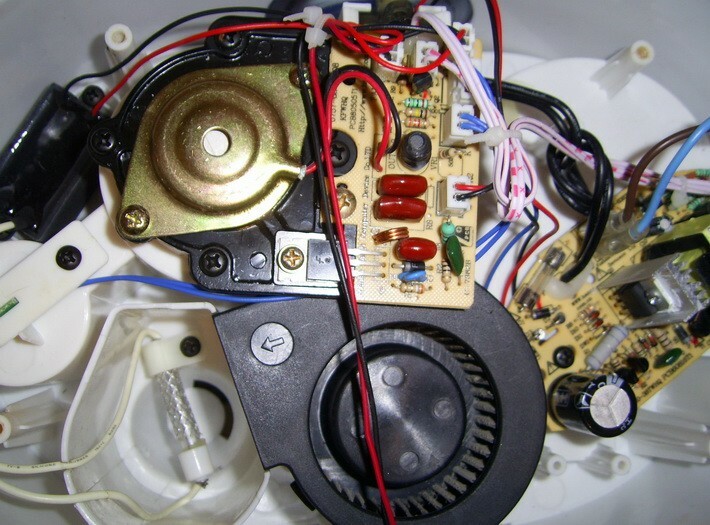
In the foreground is a fan snail. Incorrect settings of which can lead to splashing of moisture from the humidifier tank. Above on the left is a membrane, or rather its casing (diamond-shaped, golden in color with a hole in the middle of the structure). Failure of the specified element will also lead to the appearance of wet spots around the climatic device.
Distributor head allows you to adjust the air pressure. Since excessive performance or high air speed leads to the fact that part of the water splashes. In this case, simply adjust the humidifier.
But it so happens that it wears out or breaks down for other reasons. Consequently, the malfunction can only be eliminated by replacing the distribution head, and sometimes the fan.
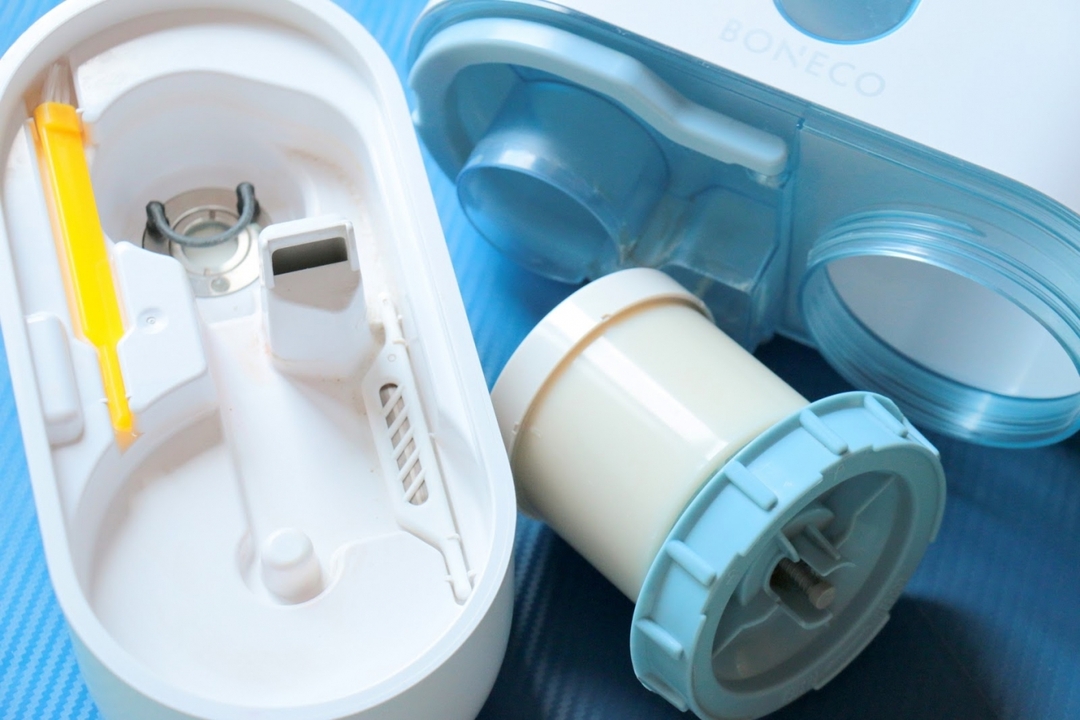
Reduce the likelihood of leakage, and significantly, regular maintenance of the humidifier. The main procedure of which is to clean the device
In construction ultrasonic humidifiers a mechanism is provided, which is called a membrane. Its task is to split water into tiny particles. But sometimes the membrane (piezoelectric element) fails, which is easy to determine by the absence of a characteristic "gurgling" during the operation of the device. As a result, the fan blows out not steam, but water droplets from the housing, which leads to the formation of water pools around the unit.
The indicated faults are eliminated by replacing the part. But, if the piezoelectric element is replaced (even on its own) quite simply, having soldered out the old one and soldered in a new one, then difficulties may arise with finding the right one.
In addition to leaks with a humidifier, other problems can arise. Therefore, we recommend that you familiarize yourself with the most popular faults and how to repair them.
Conclusions and useful video on the topic
The video below shows you how to replace the membrane yourself. And most importantly, this material will allow you to familiarize yourself with the design of humidifiers and how to disassemble it. Which will simplify the task of finding and eliminating the cause of the leak:
Finding out why your humidifier is leaking is relatively easy, even at home. But it should be understood that a person who is faced with this task for the first time may take a lot of time to solve it. Sometimes it happens that repairing a product is unprofitable - it's easier buy a new humidifier.
Have you solved the problem of household humidifier leakage on your own and want to tell other users about the nuances of the repair? Or do you still have questions on the topic of our material? Ask our experts, share your own experience - the feedback block is located below.


